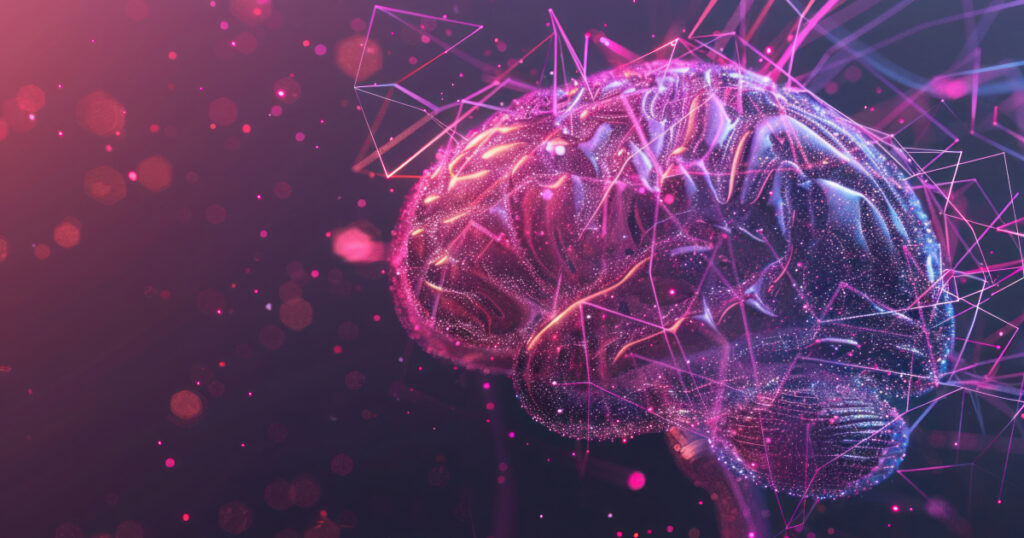In a world where scientific rigor meets age-old mysticism, few practices spark as much curiosity as energy healing. Once a niche concept, the mystery of energy healing has steadily gained traction, drawing interest from people across all walks of life; from wellness enthusiasts to skeptics. Its appeal lies in the unique blend of spirituality and science, leading many to wonder: Is there something truly transformative here, or is it all in the mind?
For some, energy healing represents a mystical journey, a practice rooted in ancient wisdom that taps into the unseen forces around us. For others, it’s an intriguing subject for scientific exploration, challenging conventional understandings of health and wellness.
The aim here is to bridge these two perspectives; exploring the science and energy healing mystery, to better understand how this practice operates in a world where evidence and belief are often at odds.

What is Energy Healing?
Energy healing is a holistic practice that aims to restore balance and well-being by working with the body’s natural energy systems. According to the National Center for Complementary and Integrative Health, energy healing is a “practice involving the channeling or manipulation of energy fields that surround and infuse the body.” Unlike traditional medicine, which targets physical symptoms, energy healing works with the idea that we’re connected through unseen flows of energy that influence us mentally, emotionally, and spiritually.
Energy healing has seen a notable rise in popularity in recent years. In the United States, the alternative medicine industry, which includes practices like energy healing, was projected to reach approximately $30.6 billion in revenue by 2023.
The concept of energy healing isn’t new. Its roots trace back to ancient civilizations, where cultures in Asia, the Middle East, and Africa practiced forms of energy work to align the mind, body, and spirit. In modern times, energy healing has evolved to include various structured techniques that make it accessible for anyone seeking wellness.
Some popular methods in energy healing include:
- Reiki: Originating in Japan, Reiki involves a practitioner channeling energy through their hands to facilitate the body’s natural healing processes.
- Chakra Balancing: This approach focuses on the body’s energy centers, or “chakras,” aiming to balance and unblock these areas to improve mental and physical health.
- Qigong: A traditional Chinese practice, qigong combines movement, meditation, and controlled breathing to cultivate and regulate the body’s energy flow.
Experience energy healing at its best in Allentown, PA—book a session with Dr. Petra Frese and unlock your full potential!
The Science Behind Energy Healing

Energy healing, a practice that aims to balance and restore the body’s energy systems, has garnered interest from both practitioners and researchers. Understanding its scientific basis involves exploring biophysics, evaluating empirical studies, and examining its effects on the nervous and immune systems.
Biophysics Perspective
In the field of biophysics, the concept of a biofield refers to an organized field of energy and information surrounding and interacting with the human body. It is believed that this biofield plays an essential role in regulating physiological functions, influencing both cellular communication and overall health. According to a review in Global Advances in Health and Medicine, biofield science investigates how these subtle energy fields may impact health outcomes, particularly in areas like immune function, stress reduction, and recovery from illness.
Practitioners like Dr. Petra Frese, who is an energy healer in the USA, use this understanding to harness and channel energy, potentially influencing the body’s natural frequencies to promote healing.
Scientific Studies & Evidence
In recent years, research has sought to evaluate the effects of energy healing, yielding mixed results. For instance, studies on Reiki have indicated potential benefits, with some participants reporting reductions in pain, anxiety, and fatigue following sessions. However, the scientific community remains cautious, as many studies rely on anecdotal rather than empirical evidence. A systematic review published in Pain Management Nursing found that Reiki may be effective for pain and anxiety, but emphasized the need for larger, well-designed studies to confirm these findings.
Notably, the U.S. military has explored the impact of biofield therapies on PTSD patients. A randomized controlled trial published in Military Medicine examined the use of Healing Touch combined with Guided Imagery for PTSD in returning active-duty military personnel. The study found significant reductions in PTSD symptoms and depression in the treatment group compared to the control group.
Neuroscience of Healing
From a neuroscience perspective, energy healing practices like Reiki and chakra balancing may influence the brain, nervous system, and immune responses. These modalities are believed to stimulate the parasympathetic nervous system, promoting the body’s “rest and digest” state, which encourages relaxation and self-repair. Research indicates that Reiki can activate the parasympathetic nervous system, leading to reduced heart rate and blood pressure, thereby fostering a state conducive to healing.
Additionally, there is emerging evidence suggesting that energy healing can affect brainwave patterns, guiding individuals into meditative states that may enhance immune function. Studies have shown that practices like Reiki can lead to changes in brainwave activity, aligning with states of deep relaxation and meditation.
Take the first step toward balance and wellness—connect with Dr. Petra Frese, your trusted energy healer in Allentown, PA.
Read More: Reiki Explained
The Mystery and Spiritual Side of Energy Healing

For centuries, healers, shamans, and spiritual guides have tapped into unseen forces, believing in a mysterious energy that holds the power to transform lives.
Ancient Beliefs & Practices
The story of energy healing begins thousands of years ago, across continents and cultures. In Traditional Chinese Medicine (TCM), qi, or life energy, is the invisible force believed to flow through every living thing. Practitioners understand health as the harmonious movement of this qi; any blockage could spell imbalance and illness.
Similarly, in India’s ancient Ayurvedic tradition, prana—the breath of life—courses through us, connecting mind, body, and spirit in a delicate dance. Even the Egyptians believed that vital energy resided within every individual, with healers invoking divine energy to channel health and protection.
These practices were born from the idea that our existence is intimately tied to these hidden flows and that wellness is not a medical state but a profound spiritual balance.
Energy and the Body’s Chakras & Meridians
For those who practice energy healing today, aligning the body’s energy centers—often called chakras and meridians—is the key to restoring inner harmony. According to the chakra system from ancient Indian texts, seven energy centers run along the spine, each one vibrating with a specific frequency and affecting different areas of life. If any of these chakras are blocked, it’s said that the body responds with physical discomfort, emotional distress, or an overall feeling of imbalance.
In Traditional Chinese Medicine, meridians act as channels that guide qi through the body, ensuring that life force reaches every cell. Reiki, acupuncture, and chakra balancing aim to unblock these channels, reigniting our innate capacity to heal. It’s a spiritual and physical recalibration, where one feels both anchored and uplifted.
The Role of Energy Healers
Energy healers serve as guides and channels, facilitating the flow of energy to help clients achieve balance and wellness. They are trained to sense and work with the body’s energy fields, using techniques like touch, visualization, or even intention to release blockages.
Practitioners like Dr. Petra Frese, an energy healer in the USA, often describe their role as empowering individuals to access their own innate healing abilities. Healers don’t “cure” but instead create an environment where healing can naturally unfold, helping clients reconnect with their physical and spiritual selves. For many, an energy healer’s presence and guidance offer a sense of grounding and reassurance, making them an integral part of the healing journey.
Discover how energy healing can transform your life—connect with Dr. Petra Frese, a leading energy healer in Allentown, PA.
Debunking Common Myths
As energy healing becomes more popular, a few persistent myths continue to shape public perception. Many people think of energy healing as mystical or even magical, while others see it as a “quick fix” that will solve all health issues.
Here, we’ll debunk a few common misconceptions about energy healing.
Myth #1: Energy Healing is a Quick Fix
One common misconception is that energy healing delivers immediate results after a single session. While some individuals may feel noticeable shifts right away, for many, energy healing works best as a gradual process. Much like other holistic practices, it requires commitment and consistency. Energy healing supports the body in its natural ability to rebalance and heal itself, which often takes time. Practitioners like Dr. Petra Frese, a respected energy healer in the USA, emphasize that lasting change comes through regular practice and self-awareness, not a quick fix.
Myth #2: Energy Healing is “Only Spiritual”
While energy healing does involve concepts that may seem spiritual, it is not limited to spirituality alone. In fact, many modern approaches to energy healing focus on the science of biofields, the nervous system, and how energy frequencies interact with the body. Although energy healing can help promote mental clarity and emotional balance, it also supports physical wellness by reducing stress and enhancing relaxation, making it a holistic approach that addresses the whole person.
Myth #3: Energy Healing Replaces Traditional Medical Treatment
It’s essential to understand that energy healing is not a replacement for conventional medical care. Rather, it is a complementary practice that can enhance one’s overall wellness alongside traditional treatment. Energy healing can support recovery by reducing stress, improving sleep, and promoting emotional resilience, creating a stronger foundation for physical healing. When used responsibly, energy healing can complement therapies like medication, physical therapy, or counseling, offering additional support to the healing journey.
In Summary
Energy healing sits at the intersection of science and spirituality, offering a unique pathway for those seeking balance in mind, body, and spirit. From ancient practices to modern techniques, it continues to captivate and transform lives, providing a holistic approach that complements conventional medicine. Whether you’re drawn to its scientifically grounded aspects or its mystical roots, energy healing opens the door to self-discovery and inner harmony.
If you’re ready to explore this transformative journey, reach out to Dr. Petra Frese, a leading energy healer based in Allentown, PA. Take your first step toward a balanced and empowered life by connecting with someone who understands the full potential of energy healing.
Dr. Petra Frese is here to guide you—schedule your session today and experience the benefits for yourself!
Reach out today!

